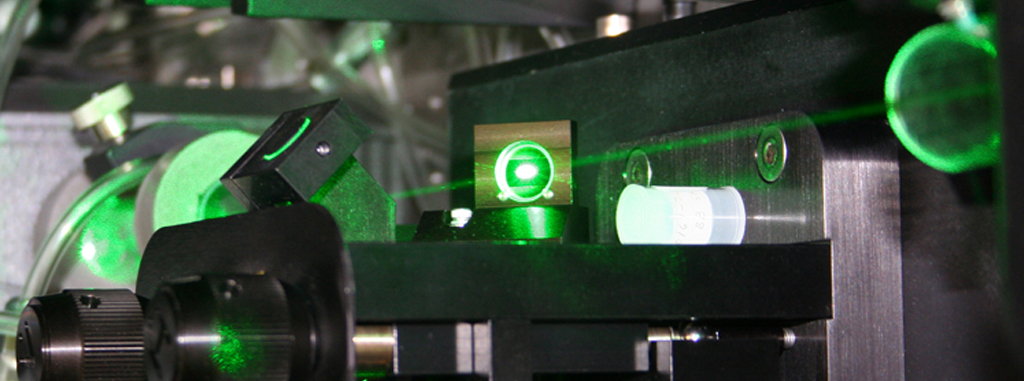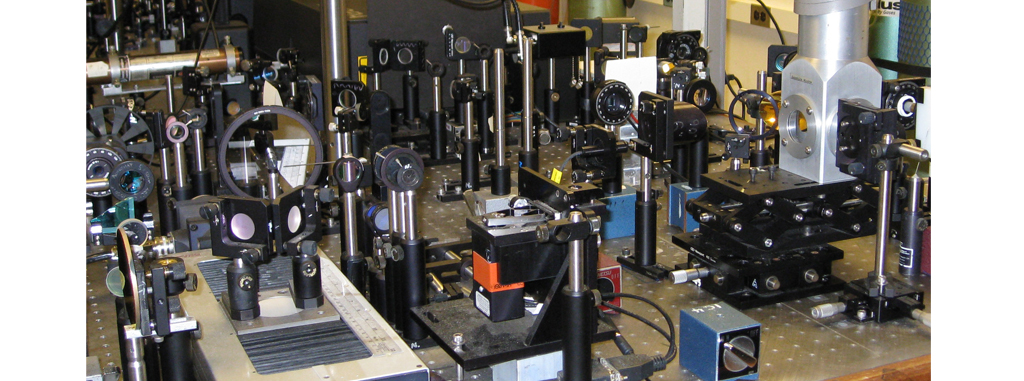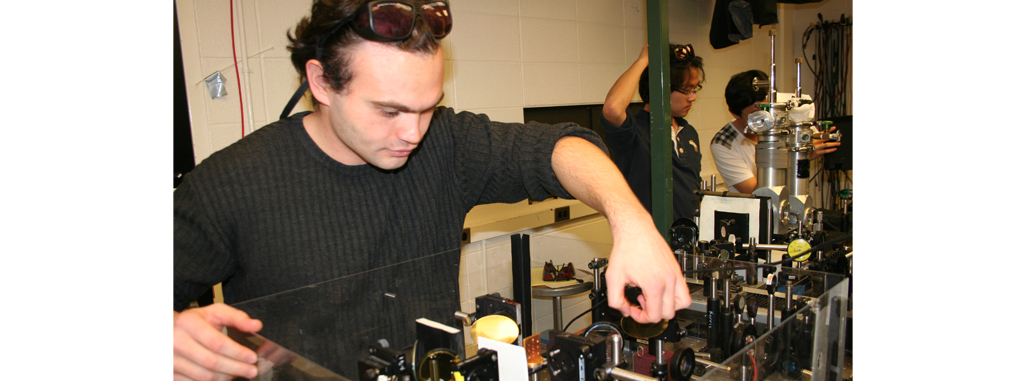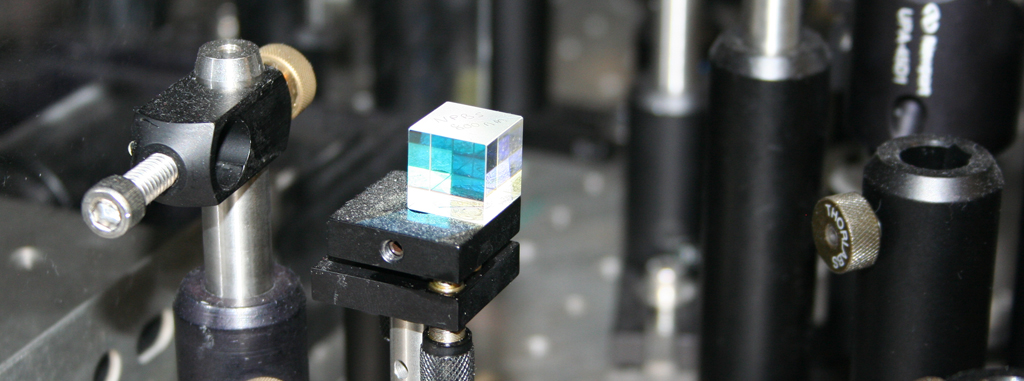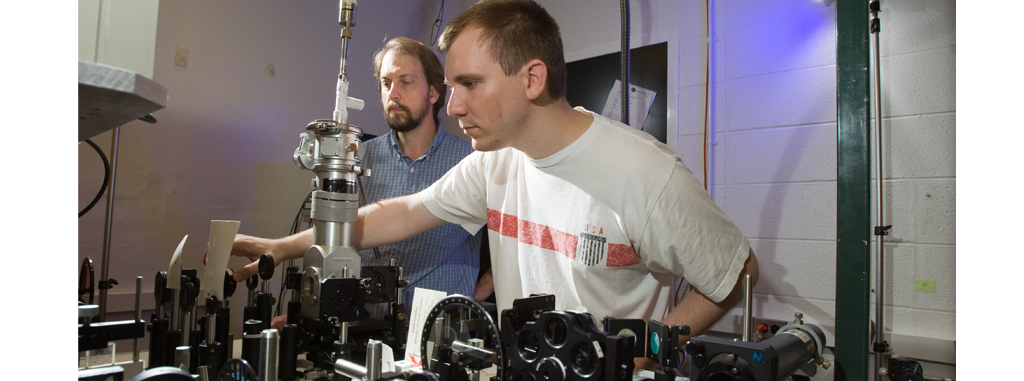Application of femtosecond optical techniques to the physics of semiconductor nanostructures, in developing new ultrafast optical and optoelectronic measurement techniques, THz generation and measurement, plasmonics in nanostructures, and novel methods for biological imaging and in vivo sensing.
Publications
Most of my publications are available on Google Scholar.
Research Overview
The research in our group centers on the propagation and applications of ultrashort optical pulses. We have developed very-high-repetition-rate, broadly tunable femtosecond amplifiers, and used these novel laser sources in a wide variety of applications. We are interested in studying the dynamics of high-speed carrier transport in semiconductors, including ballistic transport and overshoot phenomena. Transport and relaxation processes in self-organized quantum dots (which are being used for novel semiconductor lasers and infrared detectors) are under active study using femtosecond spectroscopy; we have made the first observation of the phonon bottleneck in quantum dot relaxation, and recently have performed a comprehensive study of the gain dynamics in inverted quantum dots. We are also investigating the dynamics of quantum well excitons in semiconductor microcavities, including the use of coherent control of exciton populations as a way to generate new quantum optical states in semiconductors, and as a potential mechanism for high-speed optical switching. Femtosecond pulses are being used for the generation and detection of coherent terahertz radiation. Recently we have demonstrated a new technique for generating narrowband (or even arbitrarily shaped) THz waveforms using poled lithium niobate. Our research in semiconductor device physics is carried out in collaboration with the Solid State Electronics Lab here at Michigan, as well as with other groups fabricating state-of-the-art devices around the world.
The second major theme in our research is the coupling of ultrafast optics with novel imaging techniques. By coupling femtosecond spectroscopy with near-field scanning optical microscopy (NSOM), we were able to obtain subwavelength spatial resolution simultaneously with 100-fs temporal resolution. In confocal microscopy, we demonstrated real-time confocal imaging using our amplified Ti:sapphire system. More recently, we have applied the techniques of adaptive optics and learning algorithms to provide aberration correction in multiphoton confocal microscopy. In a collaboration with the Center for Biologic Nanotechnology in the Medical School, we are applying short pulse lasers to imaging and triggering of dendrimer complexes, which are being developed as a novel cancer therapeutic. We have recently used an optical fiber probe to observe the targeted uptake of the dendrimers in cancer cells. Finally, we are also applying THz techniques to imaging. We have demonstrated that, by measuring scattered single-cycle THz fields scattered from objects, we can reconstruct (image) the objects by time-reversing the measured waveforms and applying the time-domain Huygens-Fresnel diffraction integral. We are presently investigating the possibilities for applying the time-reversal technique using picosecond acoustic pulses generated by ultrafast lasers.
Recent Courses Taught
- EECS 215: Introduction to Circuits
- EECS 230: Electromagnetics I
- EECS 334: Principles of Optics
- EECS 537: Classical Optics
- EECS 539: Lasers
- EECS 546: Ultrafast Optics

